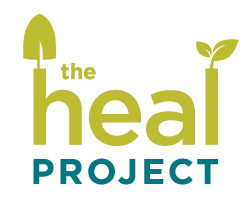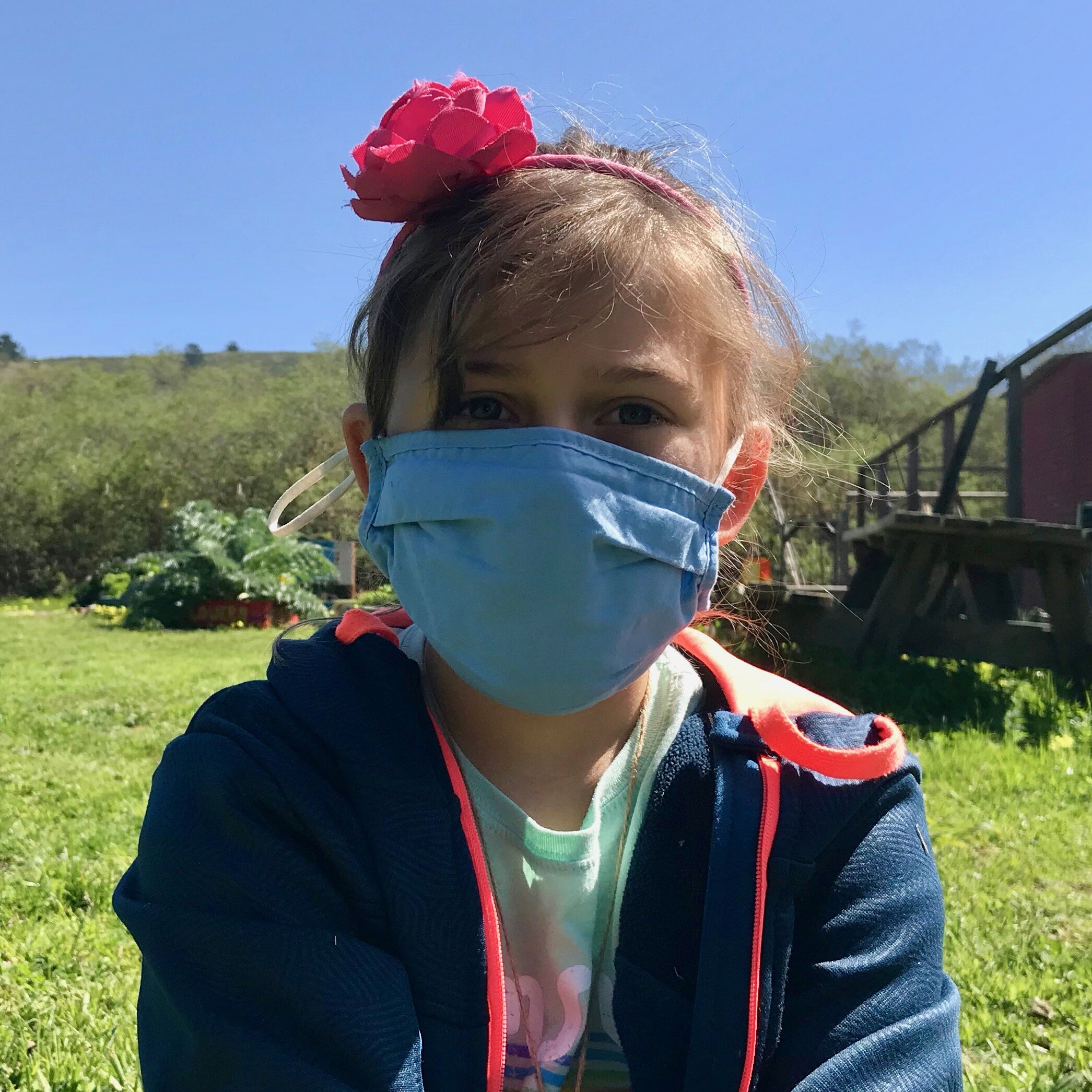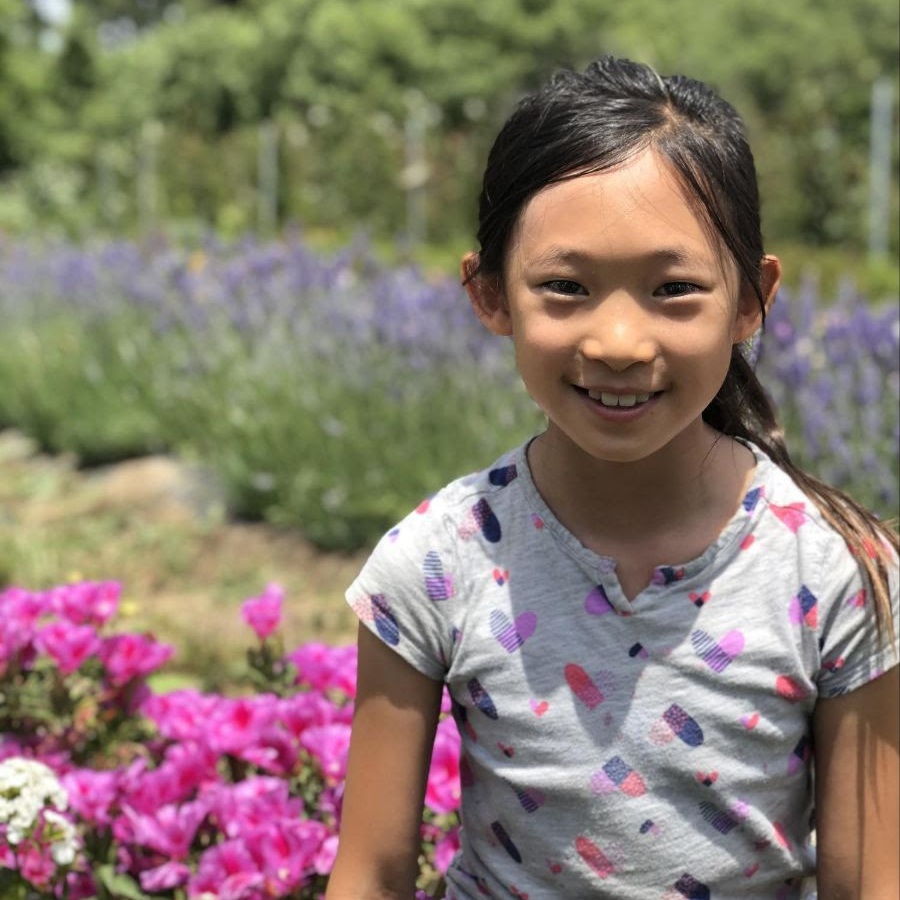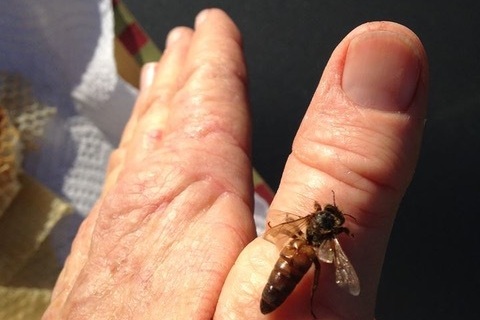Our Spotlight Series is a round-up of interviews with members of the community, including students, teachers, volunteers, donors and supporters. If you have story to share and would like to be featured, please email stories@thehealproject.org.
Camper Spotlights: Spring 2021
March 24th, 2021
Skye
Favorite activity on The Farm: Weeding. There’s tons of sourgrass in the classroom, so we had to weed it. I like touching it and tasting it. It taste's sour, that’s why it’s called sourgrass.
Wildlife encounters: When we were hiking up that hill, I found a ladybug, and it was Miss Donya’s ladybug. She found it first, but then she dropped it and I almost stepped on it.
The silly thing is, I just love animals and I don’t know why! Sadly I can’t have any pets because my mom is allergic to all animal fur. So I like to check out all the animals that are outside. One time I had a pet frog for a day. Then we had to let it free.
Quinn
Favorite place on The Farm: I like the kitchen because that’s where we make food. Usually I cook with my mom and we make sweets and stuff, and whenever she turns her back I always sneak something! Like we mostly make brownies or chocolate chip cookies or a certain type of muffin, but I don’t sneak the muffins because my brother sneaks the muffins, but I sneak the brownie mix.
Last camp day we made a pasta with bowtie pasta and foods from around the farm. And stinging nettles that grow on their own over there. We cooked it in a warm pot of water, but you have to pick a lot of it because it shrinks when it’s in the pot of water.
Aryanna
Favorite place on The Farm: Where the lizard is! It’s over there. I can show you.
Favorite activity on The Farm: See the lizards. I named one Speedy because it’s lightning speed. It goes as fast as my hand goes [shoots hand super fast]. I like lizards because I get to hold them in Yosemite.
One of my pets at home is a girl and she’s a German Shepherd and her bites can bite through bones. But she never does that.
Delaney
Favorite place on The Farm: I like the big field of sourgrass because there’s a bunch of flowers there and you can stroll around in it. I like looking at the blue sky and listening to the birds. I like to look at the bees, but I don’t want them to sting me.
Favorite activity on The Farm: I like to run around and try to find interesting plants. The first day here I found some that looked like normal green plants, but they smelled interesting and they tasted interesting.
We cooked our own pesto for our pasta. We found a special plant and added some garlic and salt and other things and made pesto! It was really good.
Donor Spotlight: The Stephen Family
December, 2020
Who we are: We feel blessed to live on the coastside in Half Moon Bay. We moved here 5 years ago from the Boston area for Jason's work and fell in love with the community, the landscape, and the weather. Our two children and 14 year old dog love to be outside in the sunshine, and they are recently learning to cook.
What The HEAL Project means to us: We grow lemons and grapefruit in our yard and we find great enjoyment in picking, eating, and sharing the fruit. When we recently heard about The HEAL Project and the role it plays in San Mateo County, we were inspired by its mission. This mission of equal access to quality food, the role of food in healing, the importance of taking care of the environment, and the critical role of hands-on education are core values
From left: Jason, Sam, Nicole, Sydney
that we are trying to instill in our children. Because of this, we chose to prioritize supporting The HEAL Project as monthly donors. We are excited to learn more about the farm, the programs, and the community that it supports.
Staff Spotlight: Donya Foley
March, 2020
After eight months as one of our Farm Educators, Donya has just stepped into the role of Farm Programs Manager! We caught her for a brief interview about the transition.
What got you connected with THP in the first place?
"I started working at THP because it's the perfect combination of both of my passions: sustainability/sustainable agriculture and education."
What excites you about your new position?
"I'm excited to transition to the Farm Programs Manager position because it will give me the opportunity to further improve our programs at The San Mateo County School Farm."
What's a favorite THP memory?
"Too many good memories to count! My favorite memories out on the farm usually stem from things the kids say or do. One of my favorite memories was discussing the chemical composition of poisonous plants... with a 3rd grader! It's always so amazing to realize how much a child's brain is capable of and it makes us, as educators, feel like we are doing our jobs!"
What do you spend your time doing when you're not at the farm or THP office?
"On the weekends you'll either find me in the Redwoods or at the beach! When I'm not outdoors, I enjoy cooking or sharing a meal with friends and family!"
Camper Spotlights: Summer 2019
July 25, 2019
Ella
7 years old
Favorite spot on the farm: The field classroom because you have a view of all the vegetables and you can see all that is growing.
I like cooking A LOT! My Favorite thing to eat on the farm is raspberries and radishes, which is funny because I don’t normally like radishes.
Being outside is nice because you get exercise, outside is where fresh air comes from and you can help preserve it.
Rowan
6 and a quarter years old
Favorite spot on the on the farm: The Kitchen!!! Because you get to cook and grill and I love cooking. I really liked making veggie bugs. They aren’t actual bugs but you use your creativity to make vegetables look like caterpillars or butterflies. I made a ladybug.
I like being outside because of the fresh air and the white butterflies. You can also give flowers to your mom and make her feel like a rainbow. You shouldn’t put that acid stuff on plants that make the bees die. People should stop doing that. Also no litter is the best thing. Cities should not litter.
Andrew
10 years old
Favorite activity: Chopped! cooking competition and snail races.
I like cooking, we make a lot of recipes that have veggies “sneaked” in them like beet brownies.
I wish more people would preserve. People can help by recycling, reducing, reusing and by not polluting our ocean. It is important to protect our ocean.
Snail name: Crackie
Ava
9 years old
We’re making lots of stuff with veggies. Chard, kale, beets. It’s all farm fresh and really good. Better than what my mom buys at the supermarket!
I love the raspberries. I like to cook with my dad. It’s important for kids to spend time in nature because most kids are spending time on screens and it’s good to just give your eyes a break.
Some kids are getting addicted. Nature is real, a phone isn’t.
The best thing about being outside at the farm is the fresh air and I love the snail races. Also it smells good here because of all the flowers.
It is important to eat vegetables because they have healthy vitamins not like candy. Candy is just sugar and it gives you a short burst of energy then it runs out and you just want more sugar.
Beekeeper Spotlight: Pat Morrissey
June 19, 2019
How and when did you get into beekeeping?
In early 2011, my companion Walther had a neighbor Bill who kept bees in town. One afternoon, Bill asked me if I’d like to keep bees and if so, he’d mentor me. I said yes and I fell in love with beekeeping.
What’s something surprising about bees that most people don’t know?
Bee colonies are a community and every bee has a job. There are nurse bees who take care of the brood and undertakers who remove dead bees from the colony. Construction worker bees that use propolis to seal up cracks, rebuild damaged comb and make comb cells for the Queen to lay eggs. Scout bees that look for new places to live or to let the forgers know where there is a plentiful supply of nectar and pollen.
When the young bees hatch out of their cells they clean up their cells so that the queen can come through and lay eggs. An image of children waking in the morning and making their beds comes to mind. There are cooks and house keepers and guard bees too. All of these positions are held by females. The Drones (males) are also in the colony though their numbers are quite a bit less than the females. Even though they don’t work they are a very important part of the hive and mating process.
What’s a common misconception about bees and or beekeeping?
When I first started doing the bee presentations most of the children were afraid of bees and being stung. A fellow beekeeper and I wanted to dispel that fear while making sure the kids remained cautious. We started out by showing the children hand drawn pictures of the many pollinators that exist including butterflies and hummingbirds. We talked about the importance of all pollinators, even those pesky yellow jackets. We discussed what not to do. Don't stand in front of a hive or swat at bees. We explained that the bees may fly close by because they are curious or speed past us on a path heading back to their colony with pollen or nectar.
What can an individual do to help the local bee population thrive?
Plant for all pollinators. Pollinators like volume of many plants so if you plant sage or ceanothus then plant in multiples, not just one or two.
Please also put out a bowl of water with corks or large flat rocks and keep the bowl filled with water leaving the rocks barely covered for them to stand on so they won’t drown.
Keep weeds with flowers in your yard or lawn. Now more than any other time has it been acceptable to leave weeds that flower in one’s yard, so go for it.
What is your favorite memory about beekeeping?
Watching the transformation of school children over the course of 3 years embrace pollinators because of a special (now retired) elementary school teacher. That teacher embraced project-based education and hands-on learning. They tied pollinators into many different concepts including teamwork, organization, math, art and science.
Student Spotlight: 3rd Grader and Intensive Garden Program student takes deep dive into Aquaponics
May 29, 2019
Meet Siena Heid. Siena is a 3rd grader at Farallone View Elementary School and recently graduated from The HEAL Project’s 26-week Intensive Garden Program (IGP). Siena is a big fan of the garden and enjoyed her time planting vegetables and making recipes during class. Her favorite recipes were salsa and stir fry. She recalled the salsa had basil in it and her favorite, jalapeños. She loves spicy things and was happy to learn that you can put the jalapeño seeds in the salsa to make it even spicier.
While in the program she learned the hard lesson that many gardeners face, pests eating your plants. Voles have troubled the garden for years but educator, Laurel Bigelow, takes the opportunity to teach her students problem solving skills. Siena explained that if you cover the baby plants with a cup, the voles can’t get to them and once they get big enough you can remove the cup and the voles won’t eat them.
Siena took her interest in gardening further with the classroom aquaponics tank and even wrote a book about it. Aquaponics is a sustainable method of food production in which the waste produced by fish or other aquatic animals supplies nutrients for plants grown hydroponically, which in turn purify the water.
Siena explained, fish poop created a good fertilizer for the plants and that plants helped to clean the tank for the fish. What she liked most was that the system helped both the plants and the fish. She also had an astute observation that not all animal relationships are symbiotic and she wasn’t just talking about predators and prey. She explained, “Caterpillar eat your plants but then they turn into butterflies and help your plants by pollinating. I think that’s pretty interesting.”, I agreed. She says her biggest takeaway from the program and why she loves it so much is that “Plants, people and animals are all connected!” She even started her own garden at home and has taken many of the IGP lessons home with her, particularly picking the right kind of soil and what grows well locally.
Donor Spotlight: Susan Mihara
March 25, 2019
Our community is more than just our students and teachers. Hundreds of people give in various ways to build The HEAL Project. Our donor spotlights shine a light on the people who make our programs possible.
Who I am: My name is Susan Mihara and I live with my husband (Ted) and daughter (Annika) here on the Coast. We’ve lived here for about 18 years and feel blessed to call home a place with such a strong sense of community, surrounded by incredible natural beauty, including the fields of flowers and the many farms.
What The HEAL Project means to me: I first became aware of The HEAL Project when my daughter was still in elementary school and attended what must have been one of their first summer camps. She was outside, learning about plants, growing food, preparing and eating fresh fruits and vegetables – even enjoying ‘stone soup’! She loved her time at the farm, and the people who ran it – inspired by their passion for teaching kids about growing and eating healthy foods and caring for the environment. Annika, now a junior in high school, has been back to The HEAL project camp each year since, first as a camper, then as a Junior Leader. The HEAL Project educates and inspires – making a difference in the lives of our children and their relationship with food and the environment that will carry into adolescence and adulthood - we’re so glad to support the mission of this amazing organization!
Susan is a part of our Pollinator Giving Club, which means she donates every month. Thank you for your dedicated support, Mihara family!
Student Spotlight: Middle school student and graduate of The HEAL Project program turns garden skills into a business and writes a plant guide
February 26, 2019
Meet Fisher Michelsen. Fisher is an 6th grader at Cunha Middle School in Half Moon Bay. He is a graduate of our 26 week Intensive Garden Program (IGP) at Hatch Elementary that he attended in 2nd and 3rd grade. He says it is hard to remember the details of the program since it was, “a long time ago” but he distinctly recalls making veggie stir fry, “right over there” as he points to the outdoor kitchen of the garden. Fisher also attended 2 weeks of summer camp at our farm in El Granada. Fisher’s mom, Amy Risk, says The HEAL Project program is what sparked Fisher’s interest in gardening and plants. Soon after graduating from the program, Fisher planted a garden in his backyard and began researching what to grow and when. He told me he would try to plant all sorts of things and would pick out seeds from Hassett Hardware. Amy assured me that this new hobby was all Fisher. He spent hours reading about gardening, planting seeds, watering, weeding and harvesting. She said she is so thankful for The HEAL Project because she isn’t sure he would have found this interest otherwise.
As Fisher’s garden flourished, he and some friends who also graduated from IGP started a company, Green Co. This young group of entrepreneurs would harvest kale, mint, and potatoes from their garden and sell it door to door. “I made 15 bucks in an hour or two!” Fisher boasted. Green Co. was just the beginning of Fisher’s exploration of the plant world. Amy and Fisher won an auction item during The HEAL Project fundraiser, Spring Ahead, to learn about herbalism from local herbalist, Suzanne Elliott. “This opened another door.”, Amy says. Fisher became interested in the medicinal uses of plants and spent hours researching which plants helped which ailments. At this point in the interview he can’t help but get up and point to a plant, “This is cudweed, I could probably make a salve out this!”. He practiced making herbal salves from local plants, “which most people think are weeds!” Fisher explained. With all this new knowledge Fisher wanted to share this wisdom with others so he wrote a book.
We are proud of what Fisher has accomplished and look forward to hearing what project he takes on next. All in all, we are thrilled that Fisher has taken the initiative to share his knowledge with others. If you are interested in reading Fisher Michelsen’s book on herbalism, you can find it here: Fisher’s Plant Book.
Our community is more than just our students and teachers. Hundreds of people give in various ways to build The HEAL Project. Our donor spotlights shine a light on the people who make our programs possible.
Donor Spotlight: Melanie Washburn
February 20, 2019
Who I am: My name is Melanie Washburn and I work for W. L. Gore & Associates, Inc. as a Clinical Study Manager. I am passionate about world travel, mountain biking, being outdoors, and making new friends. My husband and I live in Flagstaff, AZ with our fur child, Benelli. I live life mainly from the guidance of one of my favorite quotes: "Life is a ticket to the greatest show on earth." –Martin H. Fischer
What The HEAL Project means to me: Connection with nature is essential to understanding the importance of our impact on this world. This connection teaches us how to live harmoniously with our environment. My hope is that one day all of society lives in this harmonious state. To make a real impact on society and to create positive, lasting change, a solid base is required. I believe the way to create that base is by starting with the root: children.
Melanie is a part of our Pollinator Giving Club, which means she donates every month. Thank you for your dedicated support, Melanie!
Let’s be friends! Follow @thehealprojectusa on social!





























